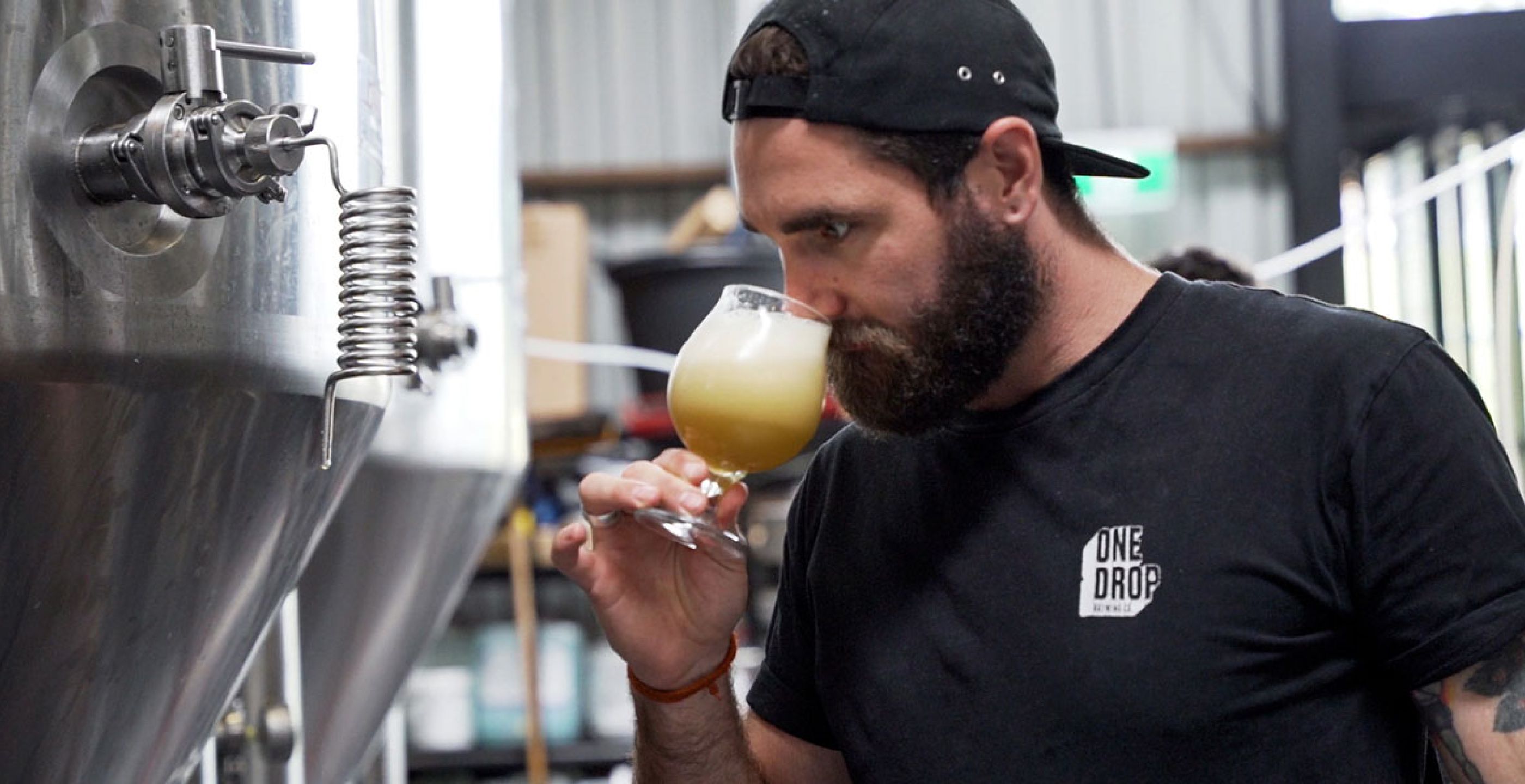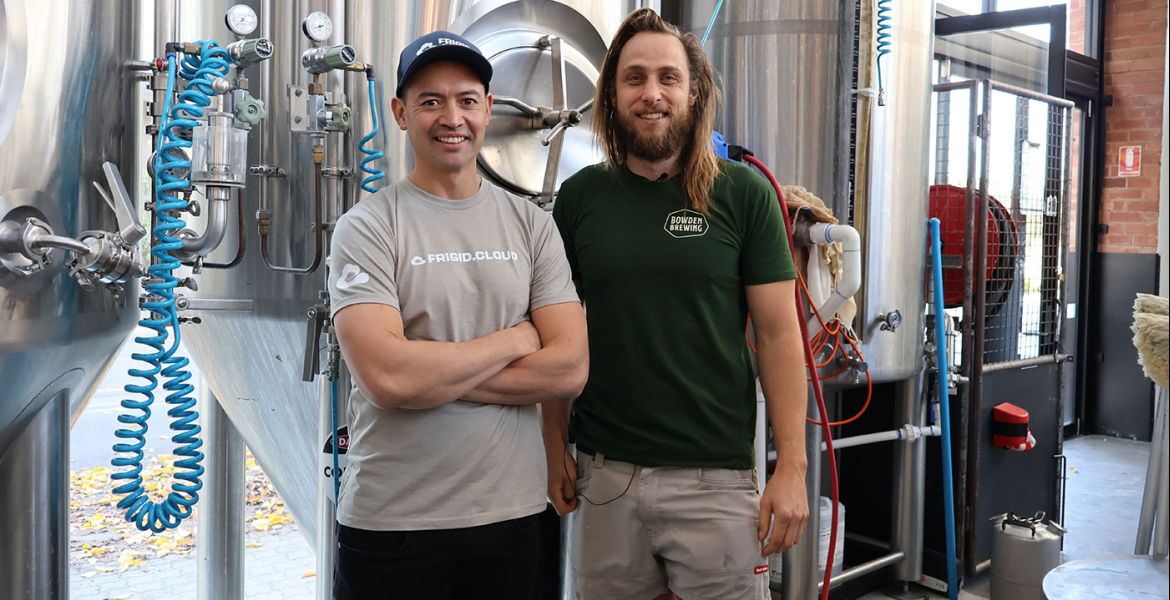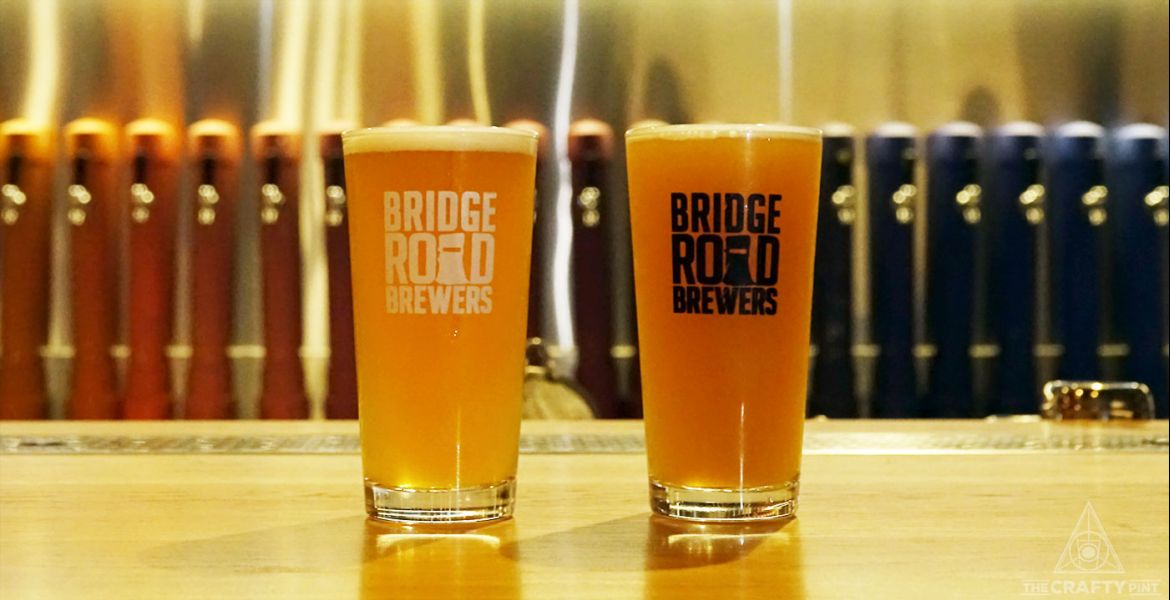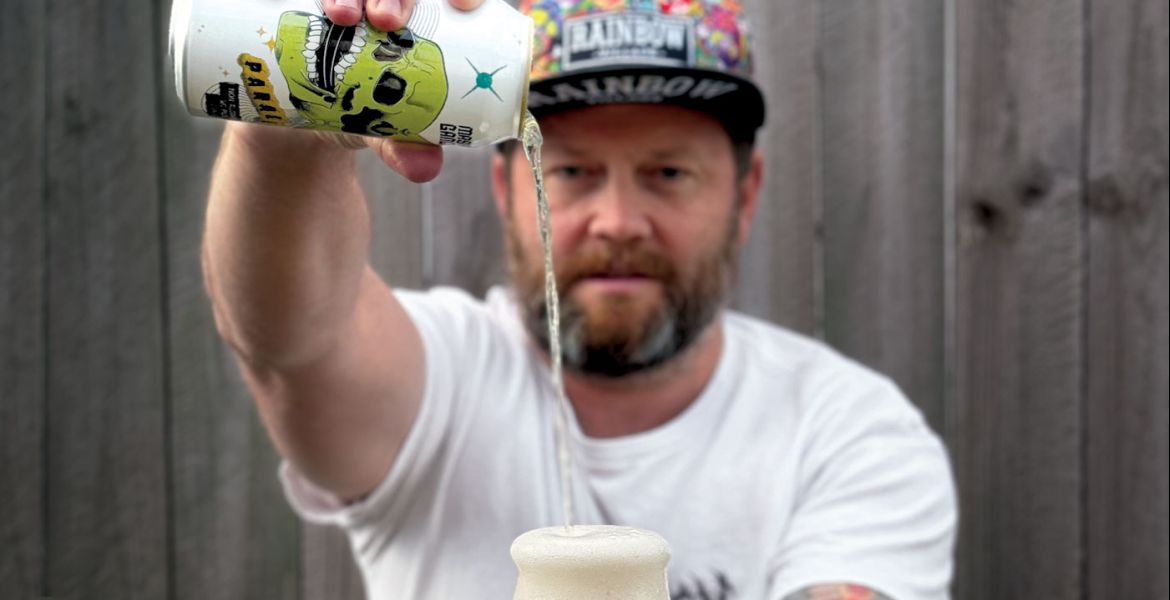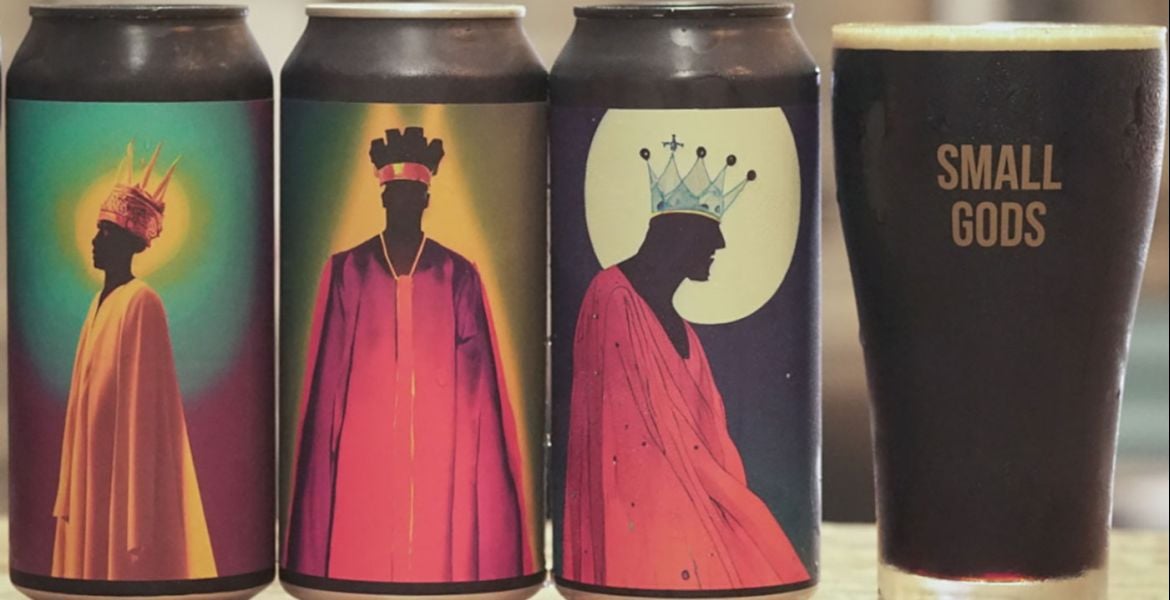The folks at Sydney’s One Drop Brewing aren't the sort to shy away from experimentation. Even by modern craft beer standards, their voluminous release schedule stands out, they're always looking to explore new styles and try out new ingredients, and you'll often find them adding what's frankly an astonishingly large amount of fruit into some of their sour beers.
“[The sour program] was a big project of mine, with a lot of suppliers for quite some time,” says head brewer Nick Calder-Scholes (pictured above) of that part of the operation. “Getting the most complex kettle sour we could.”
But it’s the latest part of their research and development program that has the Botany-based brewers particularly excited. It's something theý've been working on for some time with the aim of showering the same level of love and attention on their IPAs.
Given how broad the overall IPA family is – and the fact it only seems to be growing by the month – Nick felt that developments in the use of hops during or post-fermentation, for example during dry-hopping, hadn’t evolved as much as they could.
“We felt the methods on the cold side, with dry-hopping and actually dealing with this ingredient that’s so massive in IPAs, that hasn’t really had an upgrade for a very long time," he told The Crafty Pint, while pointing out how groundbreaking the development of hazy IPAs was.
“Throwing hops in at mid-fermentation was a pretty crazy thing five or ten years ago and that’s pretty standard now.”
So the One Drop team studied what other breweries were doing with hops, spoke to hop growers and other suppliers and scoured internet forums, podcasts and research papers for the latest research and anecdotes.
“We absorbed all of that and wanted to dissect parts of it in terms of what appealed to us and what didn’t,” Nick says.

Driving this R&D project was a simple desire: how do you get more flavour out of your hops?
But, Nick adds, they were also looking to find a way to improve some of the technical challenges they’d faced when brewing hazy beers in particular, challenges including hop creep, hop burn and issues with oxygen.
“We were just trialling and doing different stuff all the time, adding dry hop at different stages of fermentation," he says. "We got some new equipment in and tried using it before and after dry-hopping.”
They looked at a range of techniques both old and new and ended up developing what they're calling Clean Fusion, AKA a direct fusion between hops and really clean beer.
So what does that mean in practice? Nick says once a beer has finished fermenting and biotransformation (the chemical process where yeast changes hop components to promote highly-aromatic elements) has occurred in the case of hazy beers, they then remove anything unwanted that's left behind prior to adding more hops.
“We remove any particulate in the beer, any obstacles prior to dry-hopping like yeast, hot break, protein that soluble hop oils usually bind to,” he says. “What that does is provide a clean beer, and when we add the dry hop load, those soluble hop oils aren’t going to bind to stuff and drop out."
To achieve this, Nick says they use a centrifuge. It's a piece of equipment found in many breweries, but he says the difference in their approach is that they aim to strip everything they don't want out of the beer; typically, he says brewers of big, hoppy beers don’t remove all of the yeast before embarking on a second dry hop.
“I don’t want to pigeonhole it,” Nick says. “The idea is that we want people to have a go at this and innovate.
“It’s just you want to clean your beer. You want to remove your yeast and that can be done any which way you want to do it. For us, we use a centrifuge, and then you load your hops. Then again, I don’t mind how you process it, you could use filtration or finings, but we use a centrifuge.”
Ultimately, the goal is to ensure there's nothing in the liquid for hops to cling onto and potentially create unwanted issues, flavours or textures associated with the likes of hop creep and hop burn.
By stripping out yeast, hop particulate and anything else caused by a mid-fermentation dry hopping, but retaining the base beer, he says: “It provides a clean medium for those hops to fully dissolve into, and I think it creates more space in that flavour matrix for those hops to express themselves and you provide a more nuanced character out of those hops.
“The juicy and vibrant hop character is still there along with yeast ester, so you get all those characters. Then this extra dry-hopping with the main charge in Clean Fusion just adds a whole different level of complexity that’s far more nuanced and really clean.”
Prior to packaging, they go through the Clean Fusion technique once more with the aim of brightening the hop character once more.
“The first [Clean Fusion] is the yeast polishing, where it goes through the machine super fast and removes any particulate. The second time at full capacity sees you dial it in for taste and to get at the hop particulate.”
It's his belief that these extra steps give the drinker flavours in the final beer that are far closer to those you experience when you open up a bag and rub hop pellets between your palms; the term his team kept coming back to in regards to the hop character was “clean”, as well as “focused”.

To date, they’ve been trialling the technique with both hazy and West Coast IPAs and are continuing to fine-tune the balance between hop pellets and other hop products. Experience to date tells them the process can have removed a range of technical issues facing many modern IPA brewers too.
Among them is hop creep, the process of unintended refermentation caused by dry-hopping that can lead beers to develop the off-flavour diacetyl, increase in ABV, or become over-carbonated – a quite dangerous prospect in a packaged beer.
“What plagues the modern hazy IPA brewer is hop creep, and that was something we thought we could eradicate with this idea," he says.
As for hop burn, an issue we explored in this article last year, because they're creating beers with a low polyphenol load when hops are added, they’ve found this to be reduced too.
“[Hop burn tends to be caused by] either particulate in the beer or a high polyphenol load,” Nick says. “Sometimes it’s a mixture of the two and creates that really harsh astringency, and that almost yeast or Vegemite bite at the back of the palate, particularly on the swallow.”
What's more, he says the process also helps remove dissolved oxygen, with their trials suggesting these IPAs retain their hop character for longer. Nick says feedback from customers to date seems to support their in-house views, regarding it as more than just another marketing concept.
They're not alone in exploring such techniques either: others brewers in America, Europe, New Zealand and here in Australia have been working on their own approaches, with one of the common threads in feedback he's seen is that brewers are able to use fewer hop additions to achieve desired outcomes.
“People are incorporating it in beers that you wouldn’t necessarily know because they haven’t promoted it, and so far, so good,” he says, adding that he's keen to see brewers continue to share data and ideas.
“It’s not a flag on the moon," he says of a process to which they've quite cheekily added a ™️.
"We really want people to try this and see if it works for them.
“We’ve just put it into a process that we’re happy enough to release publicly and give a name because we believe it’s different enough to scream and shout about."
He adds: “We don’t want people to take this process and just use it. Nothing much has happened in this space of brewing, and we want it to be a bit of an exploration.”



